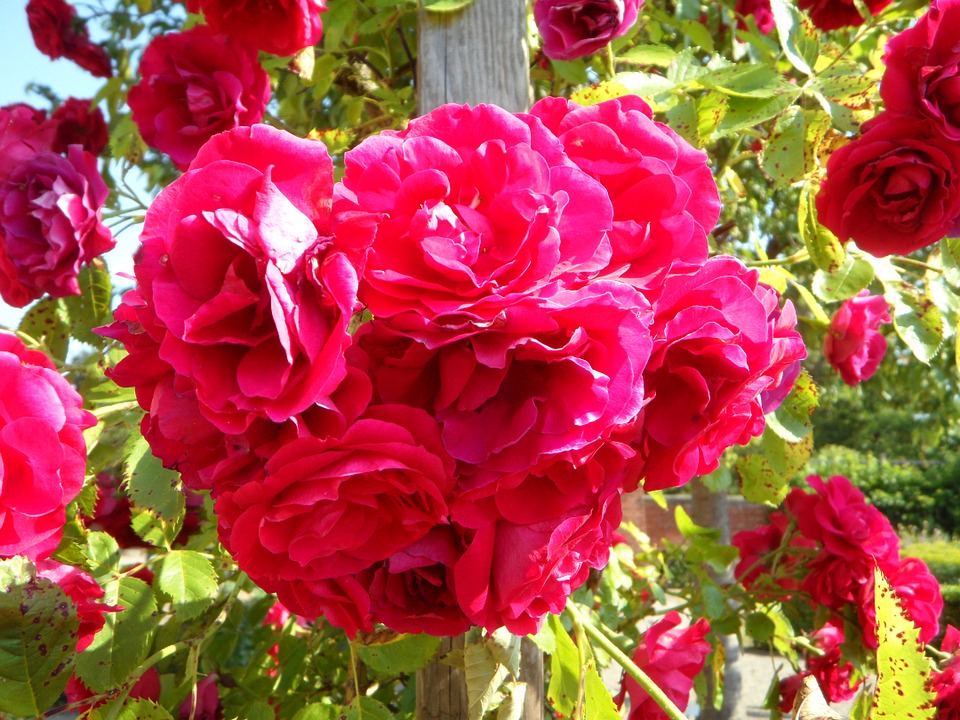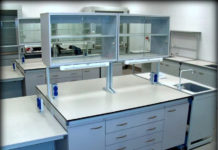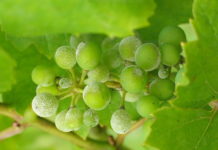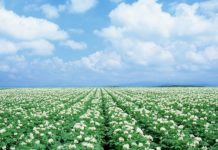Rose is the empress of the flower world. Elegant and aristocratic, this beauty is known in the composition of bouquets, shrubs, pot varieties. An elite flower, distinguished by its beauty and aroma, will decorate a celebration, a room, a personal plot.
The design uses bush, creeping, branched varieties of rosaceous displays. Climbing types of pink beauties occupy a special place among garden rose gardens. They decorate and add an aesthetic touch to the home garden, close hedges, fences, buildings, unsightly areas, old dead trees.
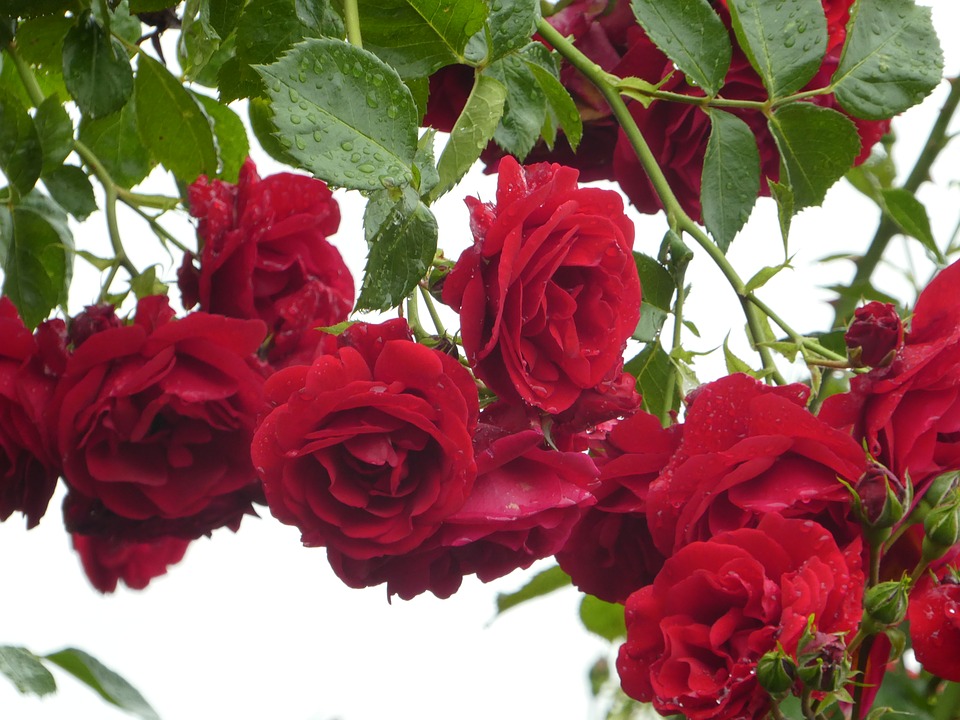
Content
general review
Climbing roses are a variety of rose hips and rose-colored tall-stemmed species that are used in vertical landscaping. They differ from the rest of the tribesmen in terms of growth and climbing ability. Reach from one and a half to seven meters in height.
It can be grown in areas with a warm climate. In places with harsh weather conditions, they need to create conditions for a comfortable winter.
Plot decor options with climbing roses:
- Decorate the entrance with an arch of climbing vines;
- When planted in pots in the backyard, they will cover an unsightly wall or decorate an abandoned corner;
- By placing flowering plants around the gazebo, create a royal resting place;
- A hedge of rose bushes will decorate the site and favorably distinguish it against the background of neighbors;
- The multicolor, accompanied by a rainbow of scents, will be a great addition to the islands of relaxation in the garden landscape.
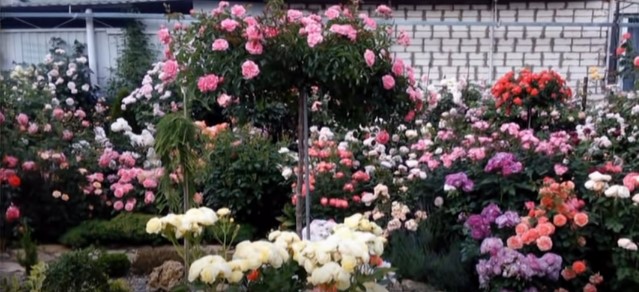
They are presented in a huge number of types for every taste. With large buds, winter-hardy, with thorns, tall, fragrant, with flexible stems and erect.
The support can be a chain-link mesh, a metal arch, a trellis, home-made structures, large pots.
Let's get acquainted with the magnificent variety and select the best varieties of climbing roses for the site.
There are two main types of this plant:
Rambler
"Creeping up". These are the most common flowering lashes. In height - from 1.5 m to 7 m. They have medium-sized buds, the number of which per inflorescence is from 5 to 20 pieces. Their size - up to 5 cm, are scattered throughout the bush. Duration of flowering - from 1.5 to 2 weeks, once, in July.
Flexible stems are pliable for weaving. Leaves of medium and small size are located on the stem without thorns. They need support. It is necessary to plant at a distance from each other, sufficient to bend to the ground before wintering. Old or damaged branches are removed at the end of the summer season. They bloom only in the second year of shoot formation. Therefore, careful pruning of the plant is required.
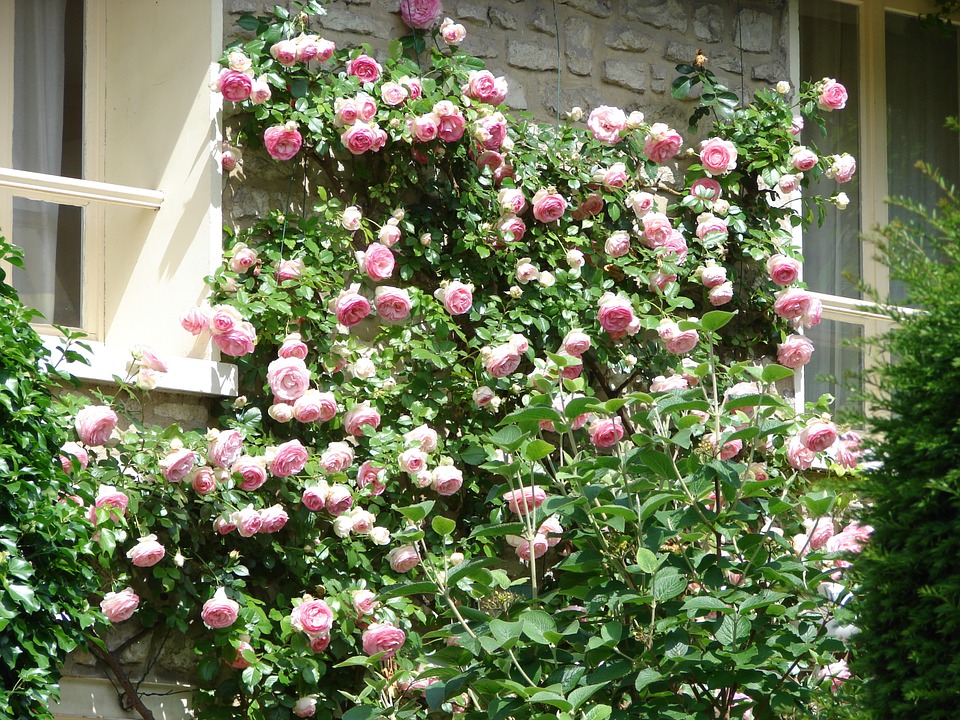
Crumblers
Rambler hybrid. They appeared as a result of crossing several types of ramblers for breeding winter-hardy varieties. This variety survives frosts more easily, vines are less flexible.Flowers are located both throughout the bush, and in the form of armfuls. Leaves with a glossy surface are resistant to diseases and pests. They are larger than ramblers. Thick lianas, up to four meters high, are stable without supports.
There are varieties that require support. One drawback of these rosaceous ones is the sturdy, thorny thorns. Therefore, it is safer to care for them with gloves. Bloom all summer with repetitions or continuously. Old, dead or deformed branches are removed in the first spring months. Flowering from the first year of the formation of a young shoot.
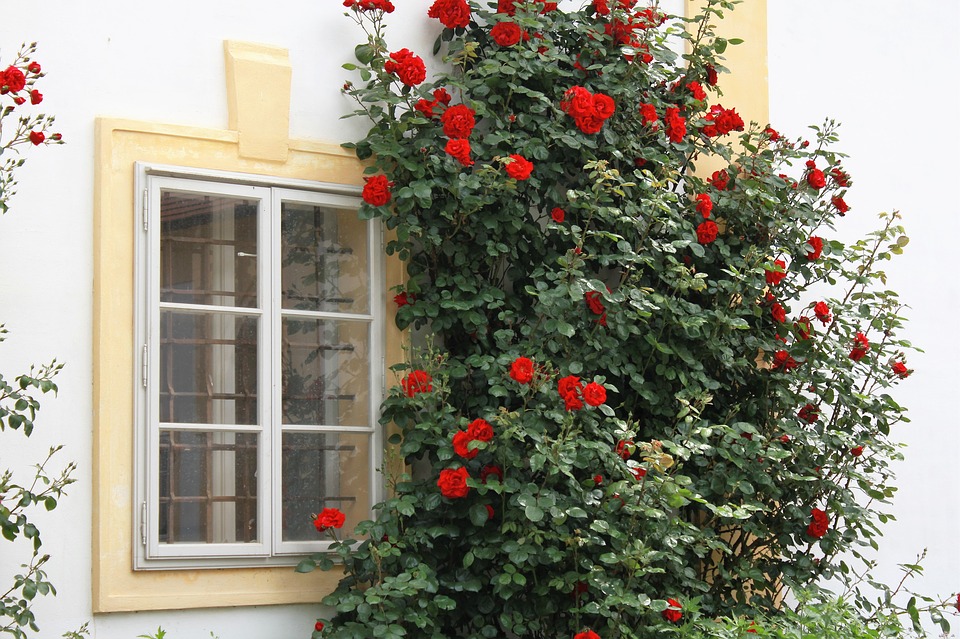
How to care for climbing roses
Reproduction
Carried out by seeds, layering, cuttings.
- The seed method is difficult to use for gardeners.
- Branching the method consists in the fact that the young vine is tilted to the ground until the time when it takes root. Then detach and get a separate pink color.
- Cutting method used more often. After the end of flowering, use the middle part of the vine for further germination.
In horticultural centers there are ready-made cuttings of climbing roses for every taste and color with an open root system or in garden packaging.
Average cost:
Price for a rose bush: from 246 rubles. up to RUB 2500
It depends on various factors:
- the age of the seedling;
- unusual color;
- the width of the choice of the landing region;
- size and unusual
- flower shape;
- flowering duration;
- frost resistance;
- resistance to disease;
- lash height;
- presence of aroma, etc.
How to choose a seedling, mistakes when choosing
In garden centers, rose seedlings are presented:
- in containers. Cuttings in garden containers are an earthen ball, completely entwined with roots.
- With open roots - packed in paper or cellophane, roots covered with hydrogel.
- Packaged - sealed in cellophane, the ends of such seedlings are covered with wax.
It is advisable to choose 2-year-old seedlings with 2-3 shoots. Adult species take root more difficult. The branched stems are healthy, strong, green with a few viable buds. Possible damage from spikes or others.
Black mold, spots, red burns, an unhealthy look of the stems are the reason to refuse this shoot.
By weight, the package with roots should be weighty.
If in doubt, ask the seller to print the plant for root inspection. They are usually folded. Should not be dry, lifeless, or with traces of decay, mold. There may be cases of curved growth of shoots relative to the root (at an angle).
If a visual inspection leaves a good impression, then feel free to buy a seedling and plant it no later than the beginning of the month of May.
The soil
These plants do not like stagnant moisture in the roots. A light, nutritious soil consisting of peat, humus, a small amount of sand for looseness will be suitable. If the soil is not very suitable, its properties can be improved. Add sand to clay to increase looseness, to sand - clay for viscosity.
Boarding time
For planting, you can choose the period before the first frost in mid-autumn, at -5, -7 degrees. In spring, this period is no later than May.
Cuttings planted in the fall will grow harder. But if you doubt that they will have time to adapt, then choose spring time. With this method, the bushes develop more slowly, but more reliably.
Landing
A convenient method of planting is cuttings. Before planting, you need to prepare the root system:
- First, the roots are carefully examined. The future abundant flowering and healthy growth of an ornamental plant depend on this.
- If the purchased cuttings are open, then it is worth removing all brown, dead processes, leaving light, living roots.
- The tangled parts are untwisted, the long ones are trimmed.
- The lower part is soaked in water to saturate the plant with the necessary moisture.
- Then they are kept in a clay mixture with fertilizer to strengthen and grow the roots to form a clay shell.
Planting a plant consists of several stages:
- In the chosen place, a hole is prepared, approximately twice the size of the roots;
- In order for the roots to grow horizontally, a piece of slate or concrete slab can be laid on the bottom;
- The stalk is deepened to a height of about 5 cm from the inoculation;
- The roots are slightly bent;
- They are covered with a specially prepared soil mixture of peat, rotted manure, ash, sand, compost in a ratio of 1: 1: 1: 1: 1, mixed with 2 parts of garden soil;
- Watered so that the earth compresses and fills all the voids;
- Then the surface is leveled, mulched or covered with expanded clay to protect the topsoil. This will keep moisture in the summer and create additional heat in the cold;
- Additionally, you can cover the seedling with paper or a cloth to protect the unripe plant from burns.
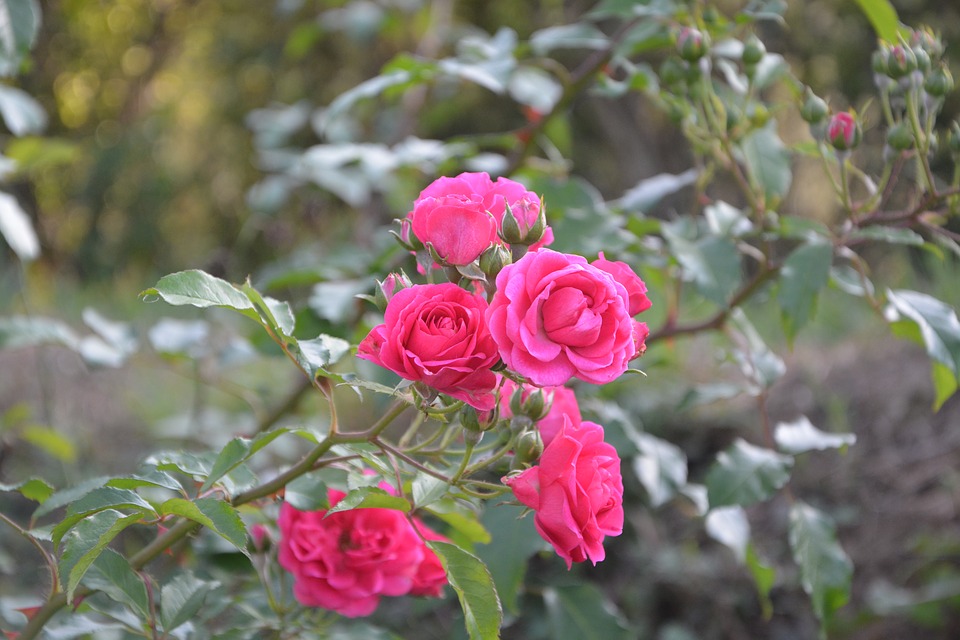
Seat selection
Climbing roses love well-lit places without drafts. This is the southern, southwestern or southeastern part of the site. It is advisable to change the planting site once every 10 years to maintain the quality of flowering, growth and health of flowers.
Watering
Required humidity for roses: 700 - 800 mm of precipitation per year.
Pink vines do not like stagnant moisture, so you don't need to overdo it when watering. During flowering, the amount of water will be required 3-4 times more than usual in order to prevent them from burning during the sun.
Good watering will ensure a lush, long flowering rose garden.
Pruning
The haircut is carried out in the spring when the winter cover is removed from the bushes. Frees from frozen, weak, old, sick lashes. Then, after the end of the flowering period, overgrown, stiff or extra shoots are removed before wintering. Pruning will significantly reduce the susceptibility to diseases of rosaceae and increase their flowering capacity. To create a decorative appearance, one haircut at 4 - 5 years is enough.
Nutrition
The pink queen loves nutritious soil, so do not forget to feed her. The blooming beauty loves organic fertilizers. They can be added to the hole, at the very root, in the spring, in the middle of summer and at the end of the summer season. Diluted mullein, purchased organic mixtures, with macro and microelements, ash is suitable.
Diseases
Climbing roses can be susceptible to diseases and pests:
- spider mite;
- aphids;
- black spot, which forms with high humidity in combination with low temperatures;
- powdery mildew, formed at high temperatures and high humidity;
- rust;
- calcium deficiency.
The first signs of the disease will be weakened, withered leaves. By examining the leaves from the back side, you can find the pest.
When climbing flower beds are not fruitful, chemicals can be applied to them to kill harmful insects. A good solution would be to treat the vines with special means in the spring before the leaves appear, in the middle of summer, in the fall - before wintering.
Garter
Scourges do not have tendrils to help them grasp the supports. They must be tied up at the initial stage of the appearance of a new process. So it will be oriented in the right direction of growth.

Shelter for the winter
On the packaging with cuttings, the manufacturer usually indicates the conditions necessary for the successful wintering of rosaceous queens.
Usually, the shelter is carried out before the first frost, at an air temperature of -5, -7 degrees. They are bent to the ground and covered with a covering material.
Early hiding is not desirable, because it can lead to rotting and subsequent death of the rose. It is possible to free the bush from the cover in the spring, when the temperature reaches + 5 degrees.
Varieties for the Northwest
This region, washed by the seas, is characterized by a humid climate with cold rains and dews. The alternation of warm winters with cool summers and colder winters with moderately warm but short-term summers depends on the area of the given area.
Air humidity is about 600 mm per year, temperature is from -10 to +30 degrees. This is a favorable climate for growing roses.
Soils typical for this territory: sod-podzolic, boggy, loamy, in a small amount - sandy in the southeast; heavy - in the south; in the west - clayey with increased moisture resistance and low water permeability.Requiring the introduction of organic and mineral fertilizers, especially phosphorus, lime.
Considering these factors, most varieties of climbing roses can be suitable for the northwest region.
Flamentanz
This variety has red flowers, which are collected in bunches of up to 15 pieces. Flowering begins in mid-summer and lasts about 1.5 months. Shoots reach a height of 3 m. Easily tolerates frosts up to -20 degrees without shelter. Demanding on the soil, does not tolerate waterlogging.
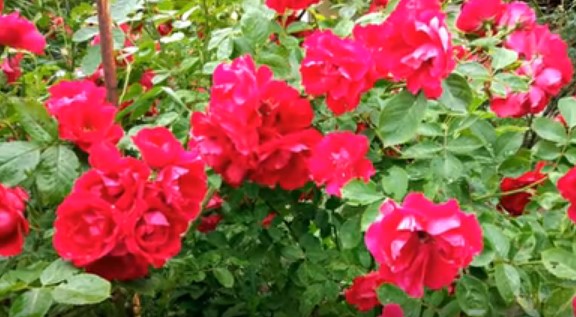
Advantages:
- strong aroma;
- disease resistance;
- does not require winter shelter.
Disadvantages:
- shoots are low;
- late flowering;
- picky about the soil.
Average price of seedlings:
3 years old. - 800 rubles / bush, 4 years. - 1200 rubles / bush, 5 years. - 2500 rubles.
Super Dorothy
Refers to ramblers. This variety is perfect for lovers of the vanilla aroma that this rather voluminous bush exudes. The buds are shaped like a pompom and are collected in bunches of 40 pieces. The beautiful flowering of deep pink inflorescences will delight until the very frost, replacing each other.
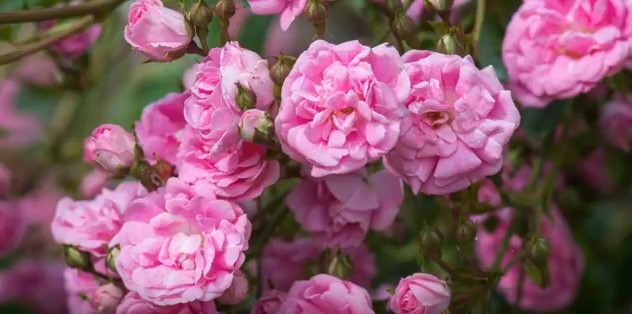
Advantages:
- beautiful coloring;
- fragrant;
- continuous flowering;
- frost-resistant;
- immunity to disease.
Disadvantages:
- late flowering;
- low shoots
The average price of a seedling is 450 rubles.
Jasmine
This is one of the newer varieties related to claiming. Dense double buds are surrounded by olive green foliage. Color from light lilac to pink. Pleases with lush flowering from the beginning of summer, which is repeated. Reaches 2.5 meters in height. Looks good in combination with blue-blue plants.
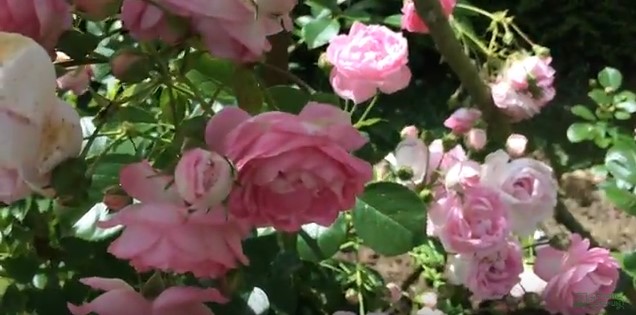
Advantages:
- frost-resistant;
- beautiful color of flowers and leaves;
- fragrant;
- resistant to disease;
- abundant flowering.
Disadvantages:
- not high;
- powerful whips.
The average price of a seedling is from 350 rubles.
Graciosa
Elegant crambler with dense double petals of inflorescences. Luxurious bloom from late May to autumn. The conditions are not whimsical. High immunity to powdery mildew and black spot. The color is pearl pink.
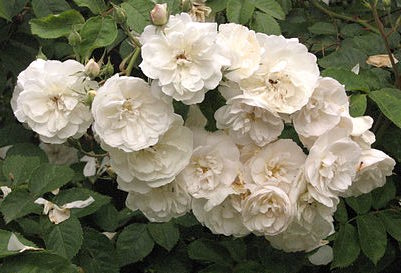
Advantages:
- continuous flowering;
- fast growing;
- not whimsical;
- fragrant;
- immunity to disease.
Disadvantages:
- thorns;
- strong whips;
- light cover in winter is required.
Average price of a seedling: 2 years. - 840 rubles.
Elfe
Refers to crumblers. Goblet buds up to 12 cm in diameter. Delivers a delicate fruit aroma. Terry petals, from ivory to light lemon. Strong lashes reach 3 m in height. Prefers sunny locations and fertile soil.
Advantages:
- fragrant;
- large flowers;
- beautiful color of the petals;
- high frost resistance.
Disadvantages:
- average height of the whips;
- needs feeding.
Average price of a seedling:
2 years old. - 450 rubles.
Varieties for the Middle Lane
Snowy frosty winters with temperatures from - 8 and below, warm humid summers up to + 22 degrees. The climate is characterized by snowy, frosty, long winters; long spring with frosts; hot but short summers and rainy fall.
The soil is sod-podzolic, moist. Common sod-podzolic soils, not waterlogged. They are not fertile, low in nutrients, acidity. They need fertilization, normalization of acidity levels.
For growing, decorative varieties of climbing roses that are unpretentious to the conditions are suitable, which will withstand harsh natural conditions, frost-resistant, easy to care for, with a high growth of new shoots.
Erinnerung an Brod
A rose bush with such a complex name has beautiful inflorescences. Abundant flowering of double buds with a rich aroma. When sheltered, it can survive 35 degrees of frost. The shoots reach 2.5 m in height and 2 m in width.
Advantages:
- frost-resistant;
- fragrant;
- re-blooming
Disadvantages:
- low whips;
- requires winter shelter.
Average price of a seedling: 2 years. - 430 rubles.
Rosarium Utersen
Refers to climbers, a widespread upright-growing shrub. Strong, stable lashes reach 3 m in height. During the flowering period, the rose bush is dotted with large bowl-shaped flowers, up to 12 cm in diameter.The color of the petals is deep pink, with a light nacreous bloom on the reverse side. Flowering begins in early summer with repeated periods and is accompanied by a pleasant scent.

Advantages:
- frost-resistant;
- strong shoots;
- large-colored;
- fragrant.
Disadvantages:
- hard stems of shoots;
- requires shelter in winter.
Average price of a seedling: 2 years. - 450 rubles.
Mermaid
This variety is unpretentious to habitat conditions and is ready to please its owners even in shady places. With good shelter, it will safely endure medium frosts (up to -23 degrees). The inflorescences are large, up to 10 cm in diameter, have a yellow-cream color with bright orange stamens surrounded by leaves of a beautiful rich green color. The continuous flowering of the shrub is accompanied by a light aroma.
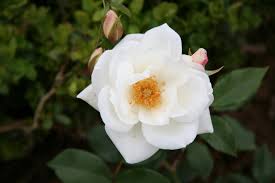
Advantages:
- continuous flowering;
- unpretentious;
- large flowers;
- beautiful colors of leaves and petals.
Disadvantages:
- average winter hardiness;
- requires careful cover.
Average cost of a seedling: 4 years. - 480 rubles.
Lawrence
This representative reaches up to 2 m in volume and 5 m in height. Rare leaves do not cover thorns located on flexible whips. To increase the amount of greenery, it is possible to arrange green-leafed plants in the neighborhood. Semi-double petals, with a yellow color, gather in bunches of up to 7 pcs. Early flowering is accompanied by an amateur aroma.
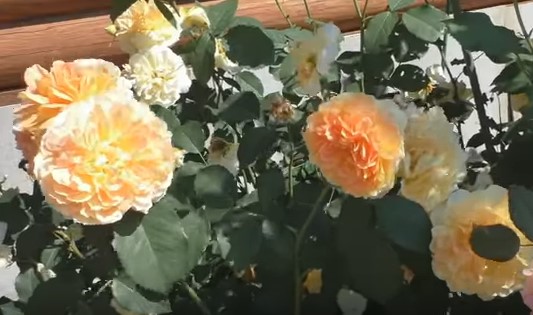
Advantages:
- tall;
- early flowering;
- volume;
- frost-resistant.
Disadvantages:
- thorns;
- single flowering;
- requires winter shelter;
- aroma.
Average cost of a seedling: 3 years. - 350 rubles.
Dortmund
This representative of the pink exposition has bright red flowers with a white center and yellow stamens. Quite large, reaching 12 cm in diameter, they literally dot the entire bush. You can enjoy blooming from June to September. Beautiful emerald-colored leaves cover the stems, reaching 2 meters in height.
Advantages:
- fragrant;
- large flowers;
- re-flowering;
- immunity to disease;
- frost-resistant.
Disadvantages:
- requires winter shelter.
Average price of a seedling: 3 years. - 650 rubles, 4 years. - 1200 rubles, 5 years. - 2500 rubles.
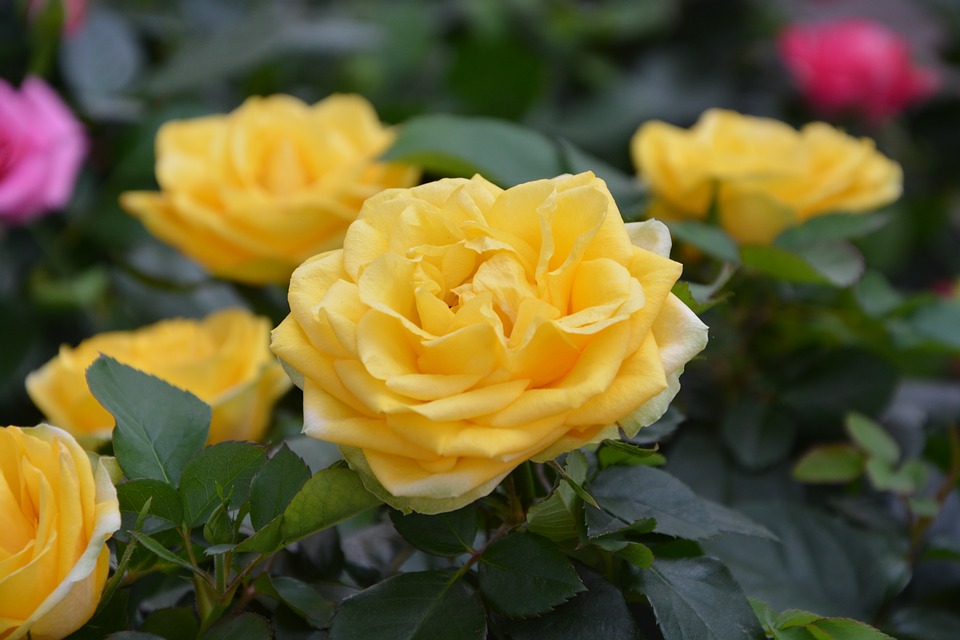
For Siberia
In winter, frosts in this area can reach -40 and -50 degrees. The snow cover is uneven: from abundant in Western Siberia to a thin layer in the Eastern part. Gusty winds alternating with snowstorms are typical for long winters. During a short sunny summer, the air temperature can rise up to +40 degrees.
The dry climate is accompanied by a small amount of precipitation - up to 350 mm per year, only in some places reaching 600 mm. In Altai - 1000 mm per year. In some years, rainy summers are offset by early warm springs or golden autumn.
The soils are podzolic and soddy. Low in nutrients, which makes it difficult to grow horticultural crops. Necessary conditions for growth: application of mineral, micro - and bacterial fertilizers; weeding; loosening; mulching. Destruction of soil by winds and rains.
For cultivation in Siberia, varieties with high winter-hardy characteristics are suitable. Hardy, quickly adapting to harsh climatic conditions and recovering from winter. With increased formation of shoots to restore frozen ones.
Planting and care will require a lot of labor while waiting for the frozen soil to warm up. Saturation of the soil with a sufficient amount of nitrogen, potash, phosphorus fertilizers in the spring, during the summer and before wintering.
Despite the harsh climatic conditions, rose growers have developed varieties that overwinter and quickly recover.
Mont Blanc
A tall, rosaceous bush with strong, firm branches covered with large glossy leaves. The rich bloom of pink buds in the form of a bowl or glass is accompanied by a pleasant aroma that is not obtrusive. The flowers reach 12 cm in diameter with a dense arrangement of a large number of petals. Flowering once, long.
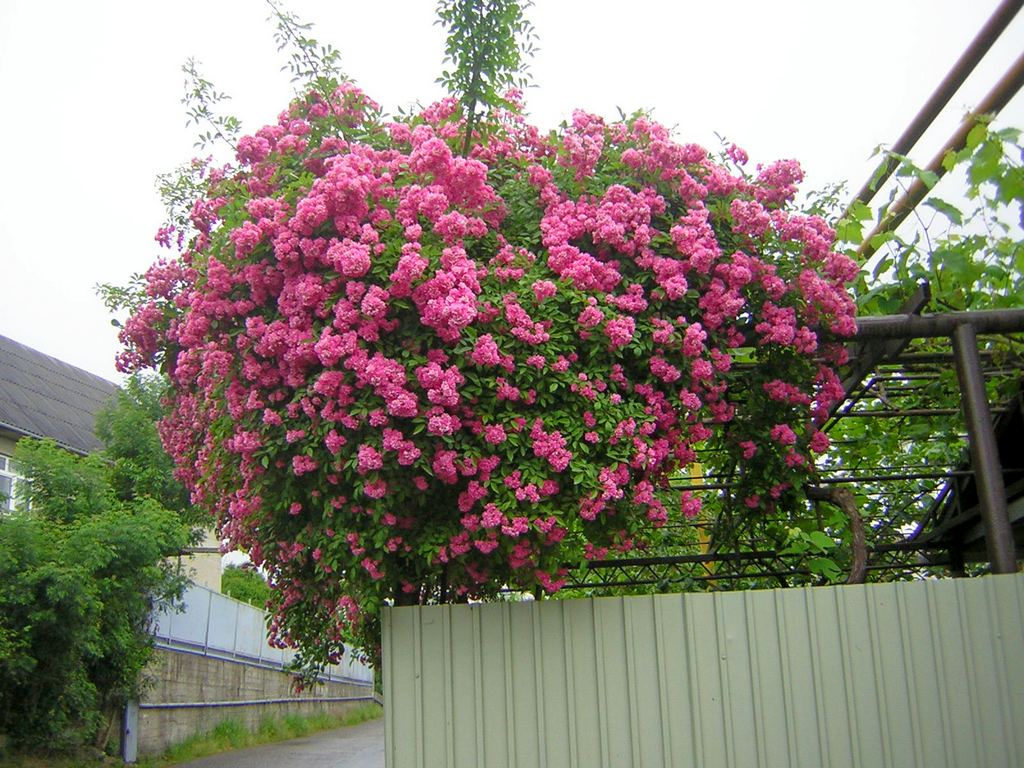
Advantages:
- high frost resistance;
- strong shoots;
- fragrant;
- long flowering.
Disadvantages:
- requires regular pruning;
- one bloom.
The average price of a seedling is 490 rubles.
Lavinia
Fluffy pink buds cover the entire surface of the liana, covering even leaves of a fairly large size. Up to 3 m high and about 2 m wide, this climbing beauty will become an elegant decoration of the backyard landscape. Inflorescences are collected in clusters of 7 pcs.
Advantages:
- immunity to disease;
- abundant flowering;
- resistant to rain;
- frost-resistant;
- continuous, long flowering.
Disadvantages:
- average height
The average price of a seedling is from 339 rubles. up to RUB 500
Gloria Day
It differs from the rest of the rose flowers in the increased size of the bud. Gradation of color of petals: from pink at the edges to light yellow towards the middle, fading, turns into a monochromatic cream. This distinguishes the variety from fellow tribesmen. The aroma also ranges from light, delicate to sweet-fruity.
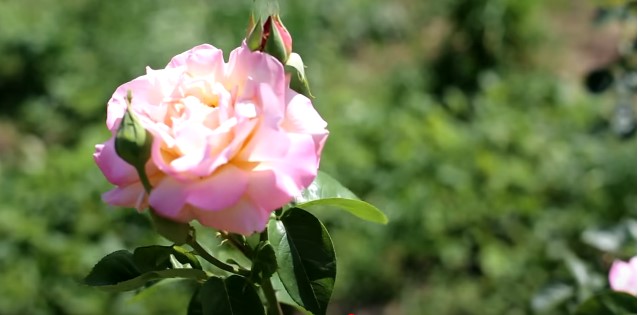
Advantages:
- petals do not crumble for a long time;
- high frost resistance;
- unusual color;
- multifaceted aroma;
- abundance of foliage;
- strong shoots;
- immunity to certain types of diseases.
Disadvantages:
- low bush height;
- aroma depends on the planting site.
Average price of a seedling: 1 years. - 210 rubles, 2 years. - 299 rubles, 3 years. - 320 rubles.
Alchemist
Tall (up to 5.5 m) and voluminous (2.5 m) shrub with the same high characteristics of frost resistance and disease resistance. Its strong stem makes it capable of withstanding gusty winds. The rapid growth of shoots will ensure the restoration of the decorative appearance in case of their loss in winter.
Blooms in early summer with buds that change color depending on the flowering period and weather. Initially deep yellow, turning to cream and then to white. The appearance of pink petals in the middle, gaining darker tones, will be an additional bonus of this unusual variety, making it more attractive and justifying the name.
An unusual quality also includes the change in the shape of the bud. First, it appears in the form of a glass, then there is a smooth transition to the shape of a bowl, and the final shape is in the form of a rosette. This rosaceous exhibit will be a pleasure to watch.
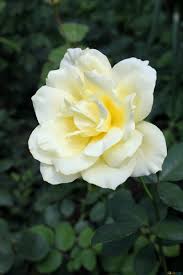
Advantages:
- high frost resistance;
- fragrant;
- high immunity to diseases;
- fast growing shoots.
Disadvantages:
- the stiffness of the shoots;
- short flowering;
- small clusters of inflorescences.
Average cost of a seedling: 3 years. - 499 rubles.
For the south
The combination of mountains, plains and sea gives different weather conditions. They can be described as follows: warm, mild winter with temperatures dropping to -8 degrees in some areas. Long, dry summers with occasional rains and air temperatures reaching + 25 degrees. Snowfall is not long lasting. A small layer of snow melts quickly.
This climate is favorable for the growth and development of plants.
The variety of soil types, mainly black earth, is characterized by fertility and high nutrient content. The high humus content ensures good plant growth.
We choose varieties that are resistant to heat and sun, long-flowering, not fading from sunlight, holding a bud, with hard petals and dense leaves.
Angela
A variety of the pink queen, from the "retro" series, which feels good in all weather conditions. The color of the flowers is pale pink, in the form of a deep filled bowl, due to the incomplete opening of the bud. Double color: red on the outside, pink on the inner petals.
Flexible shoots, covered with shiny foliage, reach 2 m in height and 1 m in volume.
 Advantages:
Advantages:
- rapidly growing;
- hardy;
- dense foliage;
- interesting coloring.
Disadvantages:
- low.
Average price of a seedling: from 480 rubles. up to 799 rubles.
Twist
A re-blooming flower garden with semi-double cup-shaped inflorescences up to 10 cm in size. An interesting pink color is diluted with burgundy or white inserts. Abundant re-flowering. The growth rate of the shrub depends on the climatic conditions in which the climbing beauty fell. After spring cutting it produces fast-growing shoots.
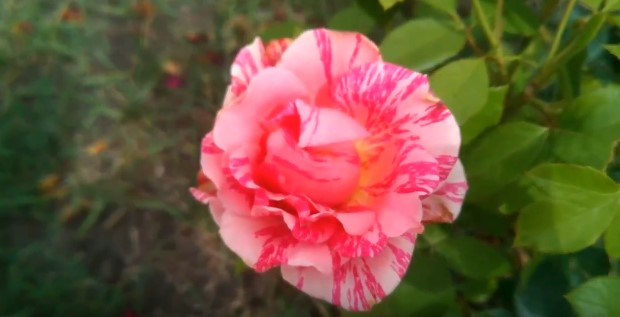
Advantages:
- fragrant;
- good acclimatization to conditions;
- not whimsical in leaving;
- recovers quickly from illness.
Disadvantages:
- requires preventive measures against pests and diseases (aphids, caterpillar, black spot);
- thorns.
The average cost of a seedling is 380 rubles.
Fairy Dance
Terry mini roses, covering the bush, from raspberry to dark pink flowers, which are collected in bunches of up to 15 pcs. Small leaves are in harmony with miniature beauties. It grows well in hot climates, reaching a width of 0.4 m to 1.5 m, and a height of about 1 meter. During precipitation, the buds darken to a deep crimson, turning into black.
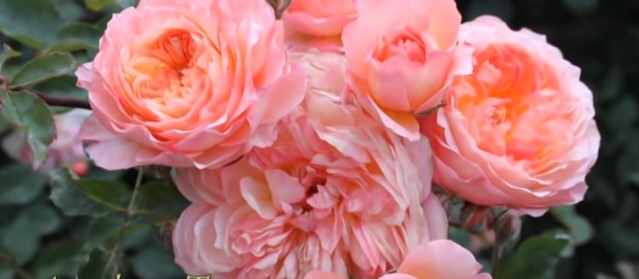
Advantages:
- not whimsical in leaving;
- new flexible shoots take root by themselves, lying on the ground;
- does not crumble for a long time;
- flameproof.
Disadvantages:
- short stature.
The average cost of a seedling is 295 rubles.
Kirsten klein
A versatile rosace, a flower shape reminiscent of an apple blossom. With small pink petals covering a shrub 1.5 m wide and up to 3 m high. Exudes a musky aroma.
Advantages:
- disease resistance;
- fragrant;
- hardy;
- re-blooming;
- can grow in the shade;
- rain resistant /
Disadvantages:
- few petals
in a flower; - blooms late.
Average cost of a seedling: 2 years. - 310 rubles.
Chaplin's Pink
This type of rambler blooms from June to October, completely covered with lushly colored buds. The height reaches 4.5 m and a width of 2.40 m. Semi-double, large flowers are framed with dense leaves.
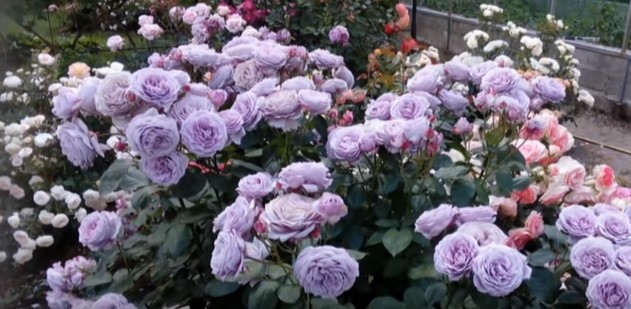
Advantages:
- unpretentious;
- persistent;
- immunity to disease;
- resistant to rain;
- fragrant;
- fast growing shoots.
Disadvantages:
- thorns;
- aphid prevention is necessary;
- a small number of buds in bunches.
Average cost of a seedling: 3 years. - 490 rubles.
Little Rambler
This rosaceous exhibit blooms with neat small flowers, up to 5 cm in size and framed by small leaves, in harmony with the spherical flowers. At the beginning of flowering, it has a light pink color, taking on a pearl hue, turning into white before falling off.
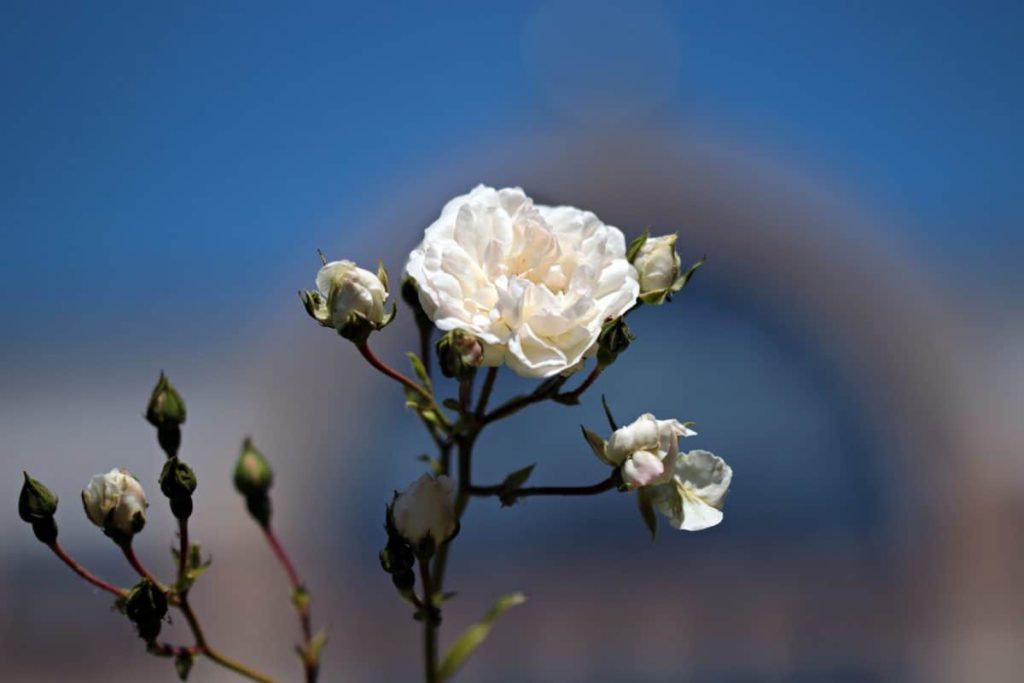
Advantages:
- resistant to bad weather;
- fragrant;
- long flowering;
- immunity to disease;
- fast growing shoots.
Disadvantages:
- does not grow in the shade;
- prevention is needed
powdery mildew.
Average cost of a seedling:
2 years old. - 290 rubles.
Combination with other plants
Climbing roses with climates, which bloom in small flowers of various colors, give a beautiful combination; girlish grapes with berries that add greenery and a variety of colors to the composition, delighting with blooming beauty until late autumn; with other blooming flowers that harmonize favorably with them in color.
Popular varieties rating
According to buyers
Varieties that include all the necessary qualities: lush flowering, suitable stem height, the length of the flowering period and its quantity, flexibility of the whips, high resistance to the winter period, can be attributed to the most popular.
These include:
- Leonardo da Vinci;
- Zephirine Drouhin;
- Constance Spry;
- New Dawn, etc.
Fashion trends
They carry retro varieties with rich aromas, delicate colors, elegant forms:
- Ash Wednesday;
- Burgundy Rambler;
- Nuage Blance;
- Burgund 81 and others.

For experienced gardeners
More capricious varieties are suitable, which can be grouped by colors and types for landscaping recreation areas. Various combinations will give more spectacular views, give a unique personality and multi-stage rainbow from delicate to tart aromas.
- You can create a romantic setting with rounded, large buds with wavy edges or terry queens exuding a delicate fragrance.
- From the company of climbing plants of simple, unpretentious forms, in alliance with other garden plantings, you can create thickets with the appearance of a wild-growing garden that has grown in natural conditions.
- By mixing fragrant varieties of rosans with others that go well, for example, with spicy plants, you can create your own unique scent that only your rose garden will exude.
- The alternation of different varieties of the same color or the multi-colored range of the same species will also look unusual and attractive.
The varieties became favorites of rose growers:
- Leonardo da Vinci;
- Abraham Darby;
- Rosarium Utersen;
- Augusta Luise et al.
Fancy
The unusual ones include:
- the variety with the largest thorns - R.Sericea f. Pteracantha;
- reaching a height of 7 m - Rambler Rector.
Having a two-tone color:
- Apple Blossom, Amerikan Pillar - white with a pink border
- Evangeline - white with a red border
- Libertas, Diggy's Rambler - red-violet with bright yellow stamens;
- Ariel, Griselis, - unusual, gray shades;
- Eventail d'Or - with golden bud color.
- Blu Bor - smoky purple with a silvery border around the edge of the petal
- Ajelita, Elfe, Kiwi, Lemonade, St Patrik Blu Bor - green;
- Bleu Magenta, Veilchenblau - repeated color change of petals;
- Little Copper - red with bright yellow stamens;
- Maxim - the inner side of the petals is pale pink, dark pink on the outside;
- Ers - includes three colors at once: coral, pink, gold;
- Camelot, Best Impereshen, Hummingbird, Candy Land - two-tone, striped.
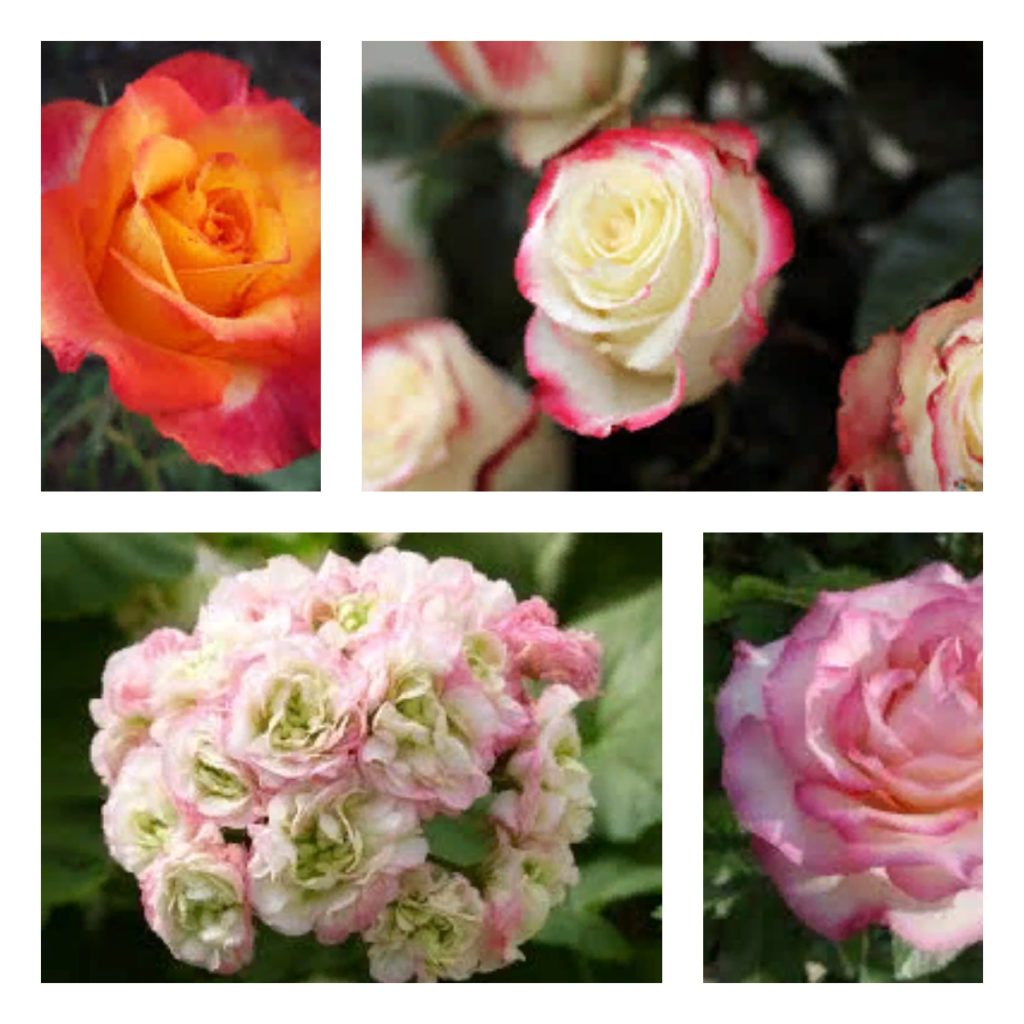
Fragrant
Those who like to enjoy a fragrant range of inflorescences can purchase varieties with citrus, raspberry, spicy, fruity, peach, apricot, apple, myrrh and verbena aromas.
Have a pronounced smell:
- Bobbi Jame;
- New Dawn Red;
- New Dawn Rouge, etc.
With a more delicate taste, leaving a light aromatic sillage:
- Histori;
- Frau Eva Schubert;
- Galia;
- Gräfin Marie Henriette Chotek;
- Felicite Perpetue;
- Dorothy Perkins et al.
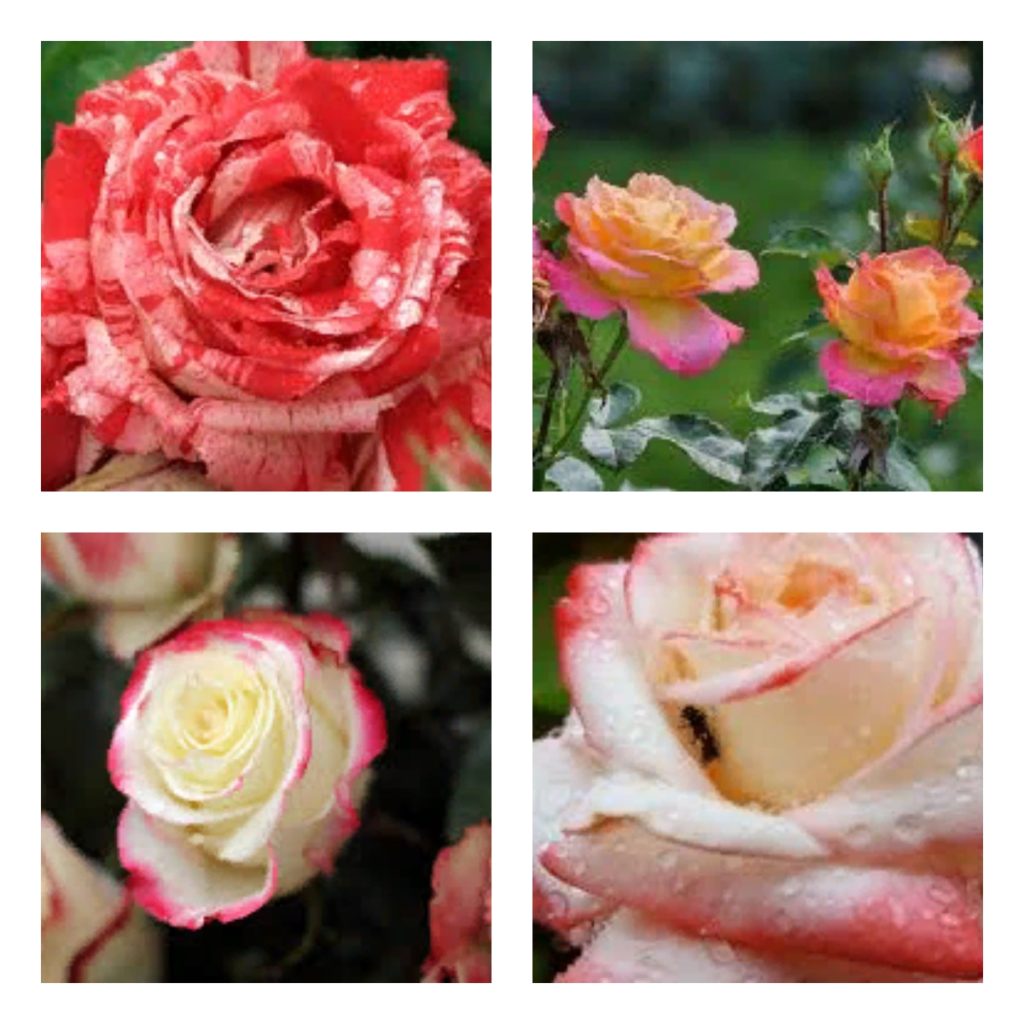
New items
The varieties recently bred by rose growers that include a combination of aroma and aesthetics:
- Illusion;
- Orange Meyandin;
- Pretty Pink;
- Sanders White et al.
Inexpensive
These varieties of roses come in different colors:
- Shogun;
- Santana;
- Swan Lake;
- White Maidiland et al.

To the best European manufacturers climbing roses include nurseries:
- Cordes (Germany), founded. in 1887;
- Tantau (Germany), founded. in 1906;
- David Austin (UK), Dof. in 1926;
- Guillot (France), founded. in 1867;
- Meilland (France);
- Harkness (Great Britain), founded. in 1879; Lens (Belgium); main in 1870;
- Orard (France), founded. in 1930;
- Jackson and Perkins (USA), d. in 1872;
- Canadian Roses (Canada), DOS. in 2010
In Russia there are a large number of garden nurseries engaged in the cultivation and sale of rosaceous crops with different characteristics.
After reviewing the proposed options for domestic manufacturers, you can choose a variety that will suit your taste preferences.
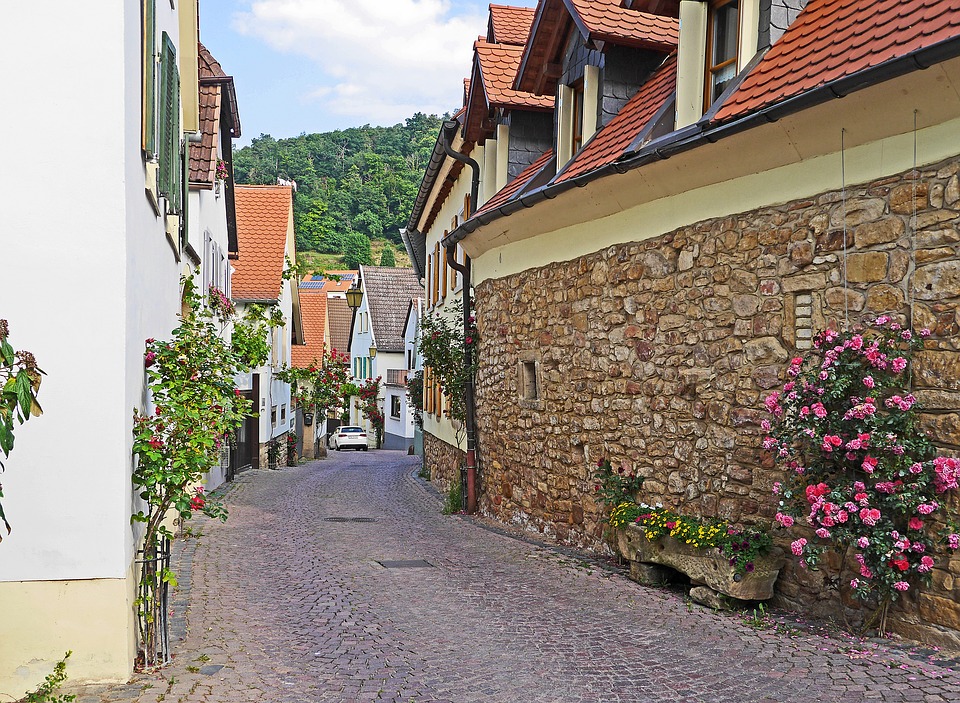
This article presents only a small part of the huge number of rosary representatives. Dedicating your time to these beautiful flowers, you can become the creator of your own special rosaceous world, in which a new natural season called "pink summer" will reign.

